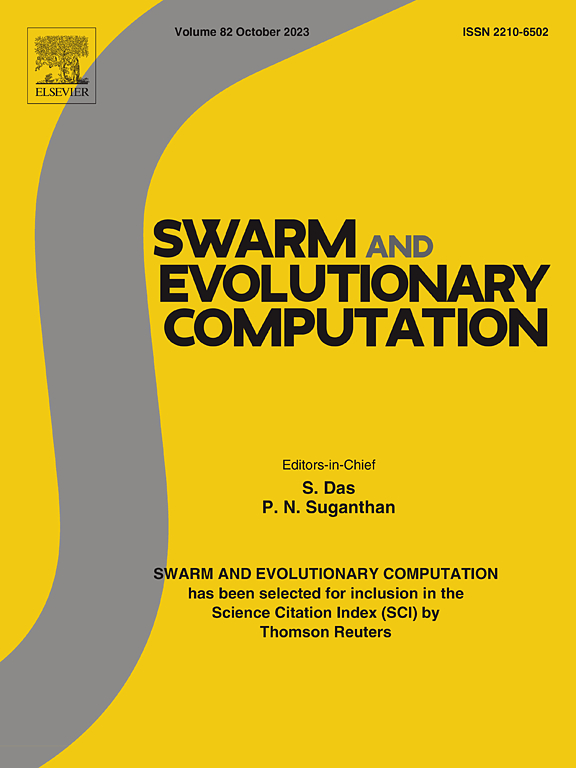Swarm intelligence applications for emergency evacuation planning: state of the art, recent developments, and future research opportunities
IF 8.5
1区 计算机科学
Q1 COMPUTER SCIENCE, ARTIFICIAL INTELLIGENCE
引用次数: 0
Abstract
In the era where natural and human-made disasters are escalating in frequency and impact, the need for advanced emergency evacuation strategies is more critical than ever. This study presents a comprehensive examination of swarm intelligence algorithms and their applications in emergency evacuation planning—a field that has become increasingly important due to the growing complexity and scale of evacuation challenges. We delve into the realm of swarm intelligence—a class of algorithms inspired by self-organized behaviors observed in nature, such as those in ant colonies, bee colonies, bird flocks, and fish schools. Focusing on specific algorithms, including particle swarm optimization (PSO), artificial bee colony (ABC), and ant colony optimization (ACO), this study discusses their applications in simulating and optimizing emergency evacuation scenarios under various constraints, interactions, and objectives. A systematic literature survey forms the backbone of this study, highlighting the diverse applications and innovations in swarm intelligence for emergency evacuation. The findings underscore the novel aspects of these algorithms, including customized objective functions, solution encodings, and effective hybridization techniques. Through case studies, the paper demonstrates the effectiveness of these techniques in critical aspects of emergency management, such as planning egress routes, locating shelters, and organizing disaster response operations. Moreover, the current limitations emphasizing the untapped potential of swarm intelligence in enhancing emergency evacuation operations are critically discussed. This survey concludes by offering a structured overview of the main findings revealed and proposing future research opportunities in applying swarm intelligence for more effective emergency evacuation planning in the following years.
群体智能在紧急疏散计划中的应用:现状、最新发展和未来的研究机会
在自然灾害和人为灾害的频率和影响不断升级的时代,对先进的紧急疏散战略的需求比以往任何时候都更加迫切。本研究对群体智能算法及其在紧急疏散计划中的应用进行了全面的研究,由于疏散挑战的复杂性和规模的增加,这一领域变得越来越重要。我们深入研究了群体智能的领域——这是一类受自然界中观察到的自组织行为启发的算法,比如蚁群、蜂群、鸟群和鱼群。本研究以粒子群算法(PSO)、人工蜂群算法(ABC)和蚁群算法(ACO)为重点,讨论了它们在各种约束、相互作用和目标下的紧急疏散场景模拟和优化中的应用。系统的文献调查构成了本研究的主干,突出了群体智能在紧急疏散中的各种应用和创新。这些发现强调了这些算法的新颖方面,包括定制目标函数、解编码和有效的杂交技术。通过案例研究,本文展示了这些技术在应急管理的关键方面的有效性,例如规划出口路线、寻找避难所和组织灾难响应行动。此外,重点讨论了当前的局限性,强调了群体智能在加强紧急疏散行动方面尚未开发的潜力。本调查通过对所揭示的主要发现进行结构化概述,并提出在未来几年应用群体智能进行更有效的紧急疏散规划的未来研究机会。
本文章由计算机程序翻译,如有差异,请以英文原文为准。
求助全文
约1分钟内获得全文
求助全文
来源期刊

Swarm and Evolutionary Computation
COMPUTER SCIENCE, ARTIFICIAL INTELLIGENCEC-COMPUTER SCIENCE, THEORY & METHODS
CiteScore
16.00
自引率
12.00%
发文量
169
期刊介绍:
Swarm and Evolutionary Computation is a pioneering peer-reviewed journal focused on the latest research and advancements in nature-inspired intelligent computation using swarm and evolutionary algorithms. It covers theoretical, experimental, and practical aspects of these paradigms and their hybrids, promoting interdisciplinary research. The journal prioritizes the publication of high-quality, original articles that push the boundaries of evolutionary computation and swarm intelligence. Additionally, it welcomes survey papers on current topics and novel applications. Topics of interest include but are not limited to: Genetic Algorithms, and Genetic Programming, Evolution Strategies, and Evolutionary Programming, Differential Evolution, Artificial Immune Systems, Particle Swarms, Ant Colony, Bacterial Foraging, Artificial Bees, Fireflies Algorithm, Harmony Search, Artificial Life, Digital Organisms, Estimation of Distribution Algorithms, Stochastic Diffusion Search, Quantum Computing, Nano Computing, Membrane Computing, Human-centric Computing, Hybridization of Algorithms, Memetic Computing, Autonomic Computing, Self-organizing systems, Combinatorial, Discrete, Binary, Constrained, Multi-objective, Multi-modal, Dynamic, and Large-scale Optimization.
 求助内容:
求助内容: 应助结果提醒方式:
应助结果提醒方式:


